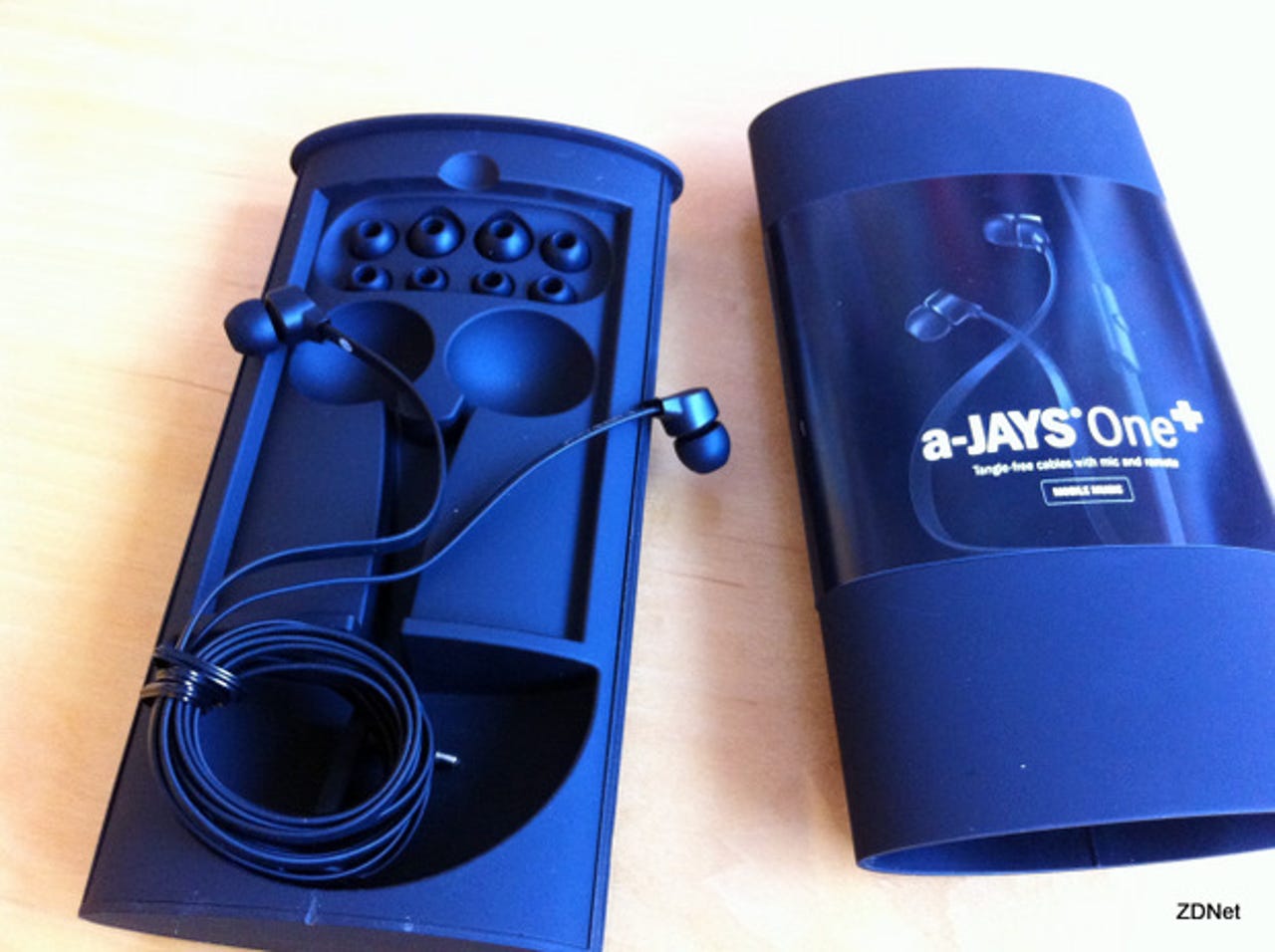Three tech toys useful for personal, work trips (review)


I've tried out Jays headphones many times before, and the a-Jays One+ headset didn't prove to too exceptional for the Swedish company. That's not a bad thing really as typically Jays headsets offer high-quality sound for earbuds.
The unique feature about this pair of headphones is that it offers support for not only Apple products (which usually the case with other Jays audio products), but also Android and BlackBerry phones with a single remote key on the right ear strand of the headset.
These headphones are available and listed for $59.99, but you can typically find them for cheaper than that.
Moving on to the iPhone-focused pair of this pair of new Jays headsets, the t-Jays Four sports a three-button remote with all of the same operations that Apple's standard iPhone earbuds perform.
For the most part, these buttons work seamlessly. However, after a few weeks of use, there were several occasions where the buttons were unresponsive. Sometimes the controls would come back after simply removing and putting the headphone jack back in, but other times I had to restart the phone. I can't determine whether or not this was the iPhone's fault or the headset, but it really could have been either or a combination of the two.
Also supported by the iPad and iPod, the t-Jays also include a "dividable" cable, in which one has the option of lengthening the cable with an included extention -- which is almost necessary for anyone. However, for someone who is quite short, the headphone cables then became much too long and easy to catch on to things once extended.
These earbuds retail for a little more at $69.99 but can also be found for a cheaper price.
If you're frequently stuck in a hotel rooms with just an Ethernet cable and expensive Wi-Fi, an alternative would be to bring your own hotspot with you. If tethering your devices to your smartphone data plan is too expensive, Belkin's wireless dual-band travel router creates a personal hotspot for laptops, smartphones and tablets.
The set-up process is rather simple. Included along with a protective travel pouch are the Belkin router, a USB cable and AC adapter, as well as an Ethernet cable to connect the router to the hotel modem or directly to an Ethernet outlet.
Once plugged in, the router has its own network names and passwords for both 2.4Ghz and 5Ghz connections.
While the dual-band performance is pretty good, this accessory is really only ideal for road warriors with multiple gadgets to connect to the Internet at a retail price of $79.99.
There are plenty of accessories out there that try to turn the iPod Nano into a wrist watch, but WiMM Labs is going further with its own Internet-connected timepiece.
Out of the box, the WiMM Labs watch is ready to go with several apps of its own, covering most of the basics like weather, a calendar, an alarm clock, and more. The review unit also came with a pre-loaded app filled with CES 2012 information and the schedule, so you can see the potential for developers here.
However, don't expect this device to fill the void of an iPod nano completely (if that's what you're looking for) because there is no audio jack on the device. Additionally, the watch itself is quite bulky, and I didn't find it very aesthetically pleasing.
Right now, only registered WIMM Labs Developers can purchase a WIMM One Developer Preview model, which retails for $299. Pretty pricey for a wrist watch, but then again so are many other designer timepieces that only tell the time (and date, if you're lucky).
Be sure to also check out James Kendrick's review of the WiMM One!